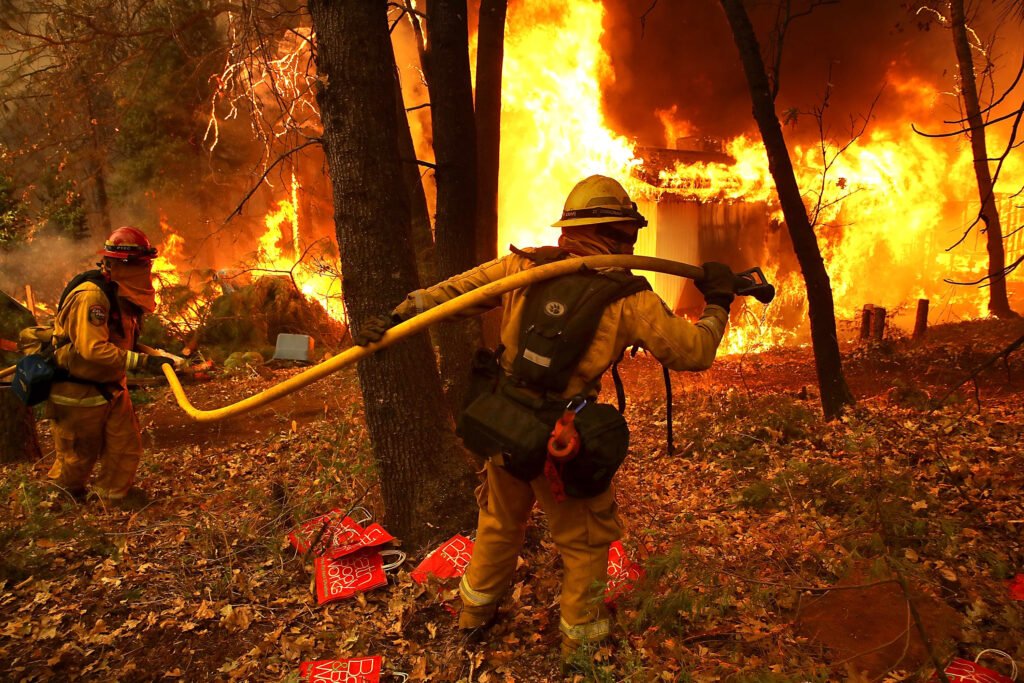
The Los Angeles wildfires of January 2025 have been unprecedented in their scale and ferocity, overwhelming the city’s infrastructure and resources. Despite the city’s extensive water systems, firefighters faced significant challenges in accessing sufficient water to combat the blazes. This article delves into the factors that contributed to this crisis, the limitations of urban water systems during such extreme events, and the lessons that can be learned for future preparedness.
The Unprecedented Scale of the 2025 LA Fires
In early January 2025, multiple wildfires erupted across the Los Angeles area, including the Palisades, Eaton, and Kenneth fires. These fires rapidly consumed vast areas, destroying over 10,000 structures and leading to the evacuation of approximately 180,000 residents. The death toll reached at least ten, with numerous others injured.
The rapid spread of these fires was exacerbated by hurricane-force winds, which not only fueled the flames but also grounded aerial firefighting efforts. A critical Super Scooper firefighting plane, one of only two addressing the massive Los Angeles wildfires, was grounded after colliding with a drone, further hampering the response.
Limitations of Los Angeles’ Water Infrastructure
Los Angeles boasts a complex and extensive water infrastructure designed to meet the daily needs of its millions of residents and to provide resources during emergencies. However, the 2025 wildfires exposed significant vulnerabilities in this system:
Los Angeles boasts a complex and extensive water infrastructure designed to meet the daily needs of its millions of residents and to provide resources during emergencies. However, the 2025 wildfires exposed significant vulnerabilities in this system:

- Reservoir Maintenance and Accessibility: At the time of the fires, the Santa Ynez Reservoir, a 117-million-gallon facility in the Pacific Palisades, was completely emptied for maintenance to repair a tear in its cover. This reservoir was scheduled to resume operations in February 2025. The absence of this critical water source during the fires significantly impacted firefighting efforts in the area.
- Exhaustion of Local Water Supplies: Despite having three water tanks in the Pacific Palisades area, each with a capacity of about 1 million gallons, these supplies were quickly depleted. Fire hydrants in the area ran dry by around 3 a.m. on January 8, leaving firefighters without essential water access during critical moments of the firefighting efforts.
3.Systemic Pressure Failures: The massive demand for water during the fires caused a significant drop in water pressure across the city’s trunk lines, especially in elevated areas. Firefighters were unable to reach pump stations to aid water transport due to the rapidly spreading fires, further complicating efforts to control the blazes.
4.Environmental and Logistical Challenges: High winds made it impossible to fight the fire from the air, putting inordinate pressure on the fire hydrant system. The public water system faced four times its usual demand, with supplies for firefighting being emptied three times in less than 24 hours. Firefighters resorted to delegating construction personnel to transport water tanks to areas requiring them.
The Role of Climate Change and Urban Development
The 2025 LA fires underscore the broader challenges posed by climate change and urban development:
Climate Change: Rising temperatures and prolonged drought conditions have increased the frequency and intensity of wildfires in California. The 2025 fires are a stark reminder of the need to address climate change proactively to mitigate such disasters.
Urban Expansion: The expansion of urban areas into wildfire-prone regions, known as the wildland-urban interface, has increased the risk to lives and property. This development complicates firefighting efforts and strains existing infrastructure.

Lessons Learned and Future Preparedness
The 2025 LA fires highlight several critical areas for improvement:
1.Infrastructure Resilience: There is a pressing need to enhance the resilience of water infrastructure, ensuring that maintenance schedules do not coincide with peak wildfire seasons and that alternative water sources are readily available.
2.Advanced Monitoring and Management: Implementing advanced monitoring systems can help manage water distribution more effectively during emergencies, ensuring that critical areas maintain adequate water pressure.
3.Public Awareness and Policy: Educating the public about the dangers of operating drones near wildfires and enforcing strict penalties can prevent incidents that hinder firefighting efforts. Additionally, policies should prioritize funding for fire services and infrastructure maintenance to ensure preparedness.
- Climate Action: Addressing the root causes of climate change is essential to reduce the frequency and severity of wildfires. This includes implementing sustainable practices and reducing greenhouse gas emissions.

Conclusion
The Los Angeles wildfires of 2025 have exposed the limitations of urban water systems in the face of extreme natural disasters. No existing infrastructure could have fully managed the unprecedented demands placed upon it during this crisis. However, by learning from these events and investing in resilient infrastructure, advanced technologies, and proactive policies, cities can better prepare for future challenges. The 2025 fires serve as a sobering reminder of the need for comprehensive strategies to protect communities in an era of increasing environmental volatility.